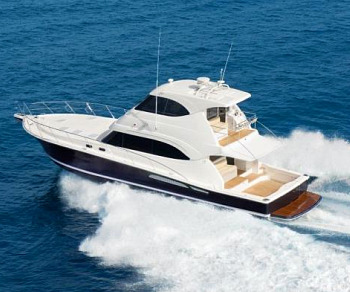Mariner 34 Review

Issue: October 2000
With bareboat charter investment deals seeming almost too good to be true I was spurred to ask a Whitsunday operator what vacancies they had in their fleet. The answer was surprising: “We need an older cruiser – something like a Mariner 34.”
The explanation was that sailing charterers continually demanded the latest, greatest Beneteau or whatever, whereas powerboaters were happy to hire older craft at a cheaper premium.
The Mariner 34 is not a particularly exceptional example of its ilk yet it achieved extraordinarily successful sales (100 sold in the first five years). Accordingly it became synonymous for the mid-sized sportscruiser genre. Intended as an offshore-capable cruiser for the well-to-do family, the 34-footer was released in 1975 at a time when imported cruisers were dominating the market. The builder was Bill Barry-Cotter, latterly of Riviera fame, who is obviously no mug.
When Modern Boating revisited the Mariner five years after its release, the boat had been only slightly improved yet still remained relevant to the market. If it was lacking in any department it was its capacity for water (227ltrs) and gas for long-distance cruising. Water, of course, imposes a weight penalty on a planing hull, and the 34 was really configured to suit probably 75% of owners who rarely, if ever, made an offshore passage.
The hull was unusual for its size in being a one-piece moulding. Using this method instead of joining two sections along the keel gave a stronger hull. Further strength came from using a one-piece deck. Early models were fitted with twin supercharged GM diesels of a total of 450hp; the 1980 version used twin naturally-aspirated 200hp Cummins and apparently didn’t lack for performance.
Average fuel consumption at a steady 1820 knots was around 20-25 litres an hour depending upon sea conditions and load. Fuel capacity was 773 litres, so the Mariner had a reasonable range. With a maximum loaded draft of only 0.9m the 34 has a considerable amount of windage yet is easily manoeuvred in berths and tight situations. At speed the boat hangs on well, with little tendency to skate or slide when the wheel is swung over. This is due in some measure to the modified vee hull with its reversed “rails” on either side of the rounded keel.
Down below the Mariner 34 provides overnight accommodation for seven fullsized adults and one child – hence its popularity with charter companies. Few people would wish to sleep this many for more than a night or two and the water supply would be barely adequate for that many showers and other uses. The boat is, perhaps, best considered as capable of supporting a family of five for a week or so.
The forecabin has two single bunks which can be converted into a large veeshaped double. Under the starboard bunk is a locker; under the port bunk is a nest of drawers. On the starboard side opposite the washroom is a setteeship bunk. The back squab hinges up to form the “small adult” bunk but it needs a strong and lengthy leeboard. This bunk has adequate shelf space and the bottom bunk has additional space, complemented by storage under the companionway steps. The head compartment offers the usual shower with pumpout sump, lavatory and several lockers and shelves. It is large enough to avoid wetting the toilet roll! Two sleeping doubles can be settled in the saloon. One is a slide-out double bed of conventional size, the other is a convertible dinette of slightly smaller dimensions.
The saloon also includes a galley and lower helm. The galley is placed to port to allow the cook to use the flat surface of the bathroom top as a workspace. An indication of the priorities of most of the 34’s buyers was shown by the non-gimbaled stove without a lid. This two-burner and griller/oven gas stove would be hard to use in anything other than a dead calm. A small 12/240-volt fridge of the caravan type is backed up by a large icebox in the cockpit.
Non-skid surfacing, hand and guard rails are well-positioned, allowing easy upper deck movement forward of the cockpit. A forecabin hatch provides an alternative method of reaching the foredeck. The able locker is large enough to take one adequate set of ground tackle and a foot-operated winch button is positioned to allow one person to heave in and coil down easily. The flybridge has seating for three with basic engine controls and instruments.
When the boat was released in 1975, a fully fitted test boat was worth around $66,000. Five years later a similar vessel cost $85,000, the price difference being below the inflation rate, so Barry-Cotter managed to keep a tight reign on costs. Second-hand examples are now priced from around $90,000 to $130,000, which is good buying. The hull offers a lot of room and accommodation and the general style of the craft hasn’t dated.
Story by Mark Rothfield

